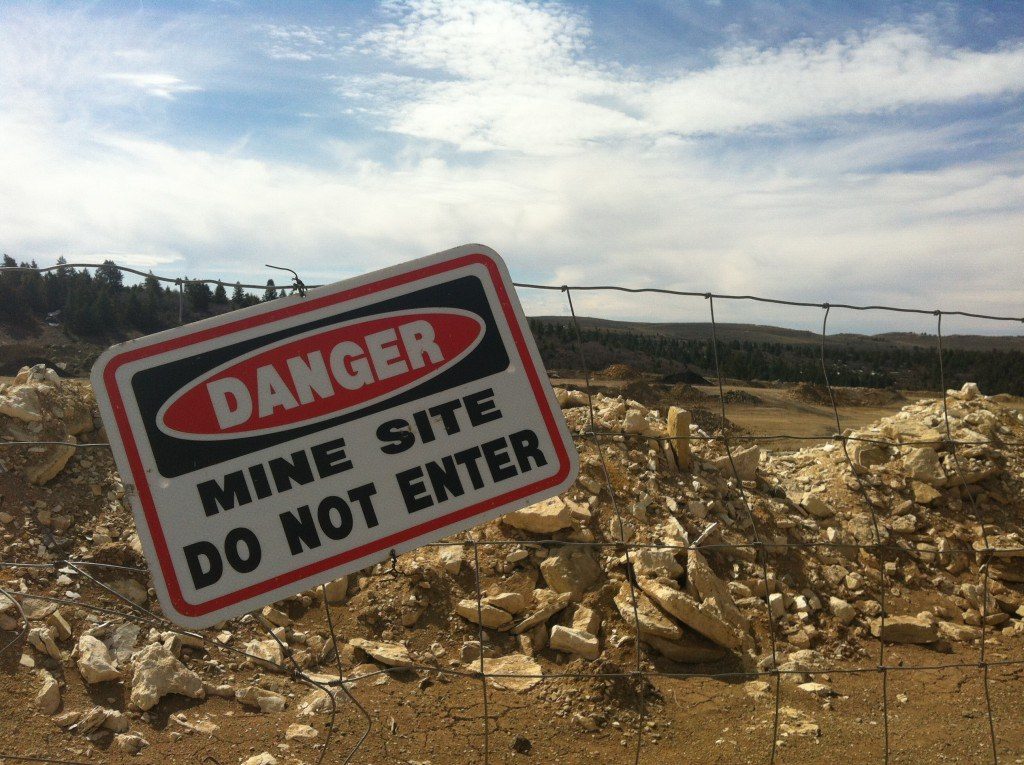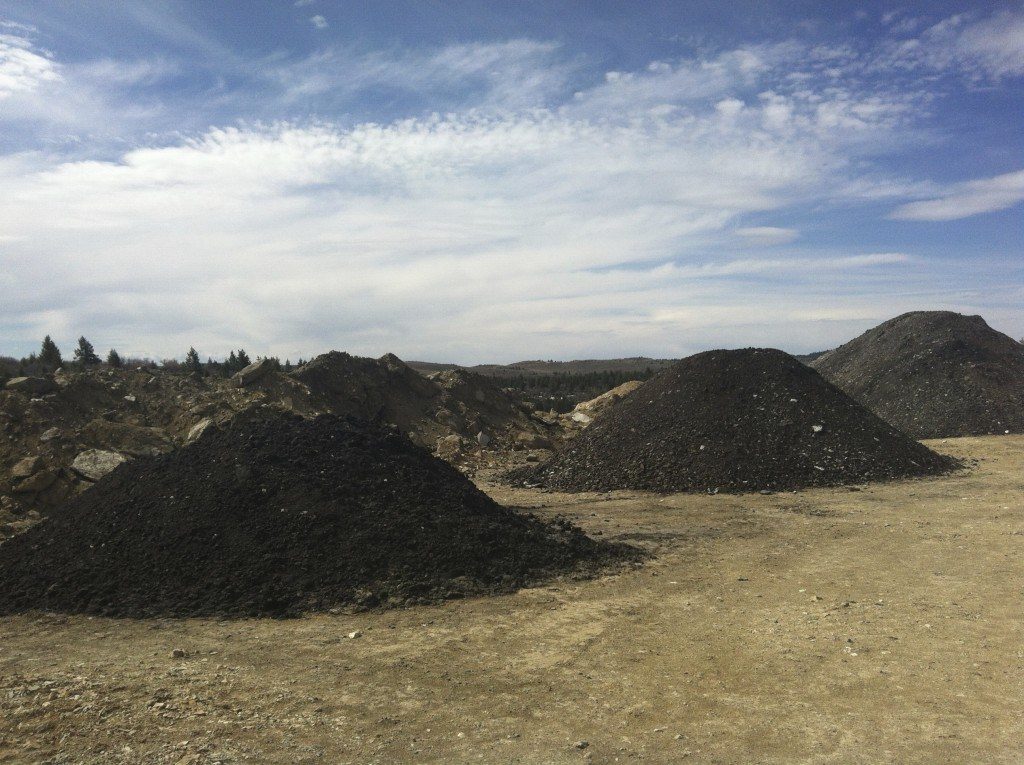Colorado Riverkeeper Takes A Stand Against Tar Sands
By: ajcarapella
Led by Colorado Riverkeeper John Weisheit, a broad coalition of grassroots activists is determined to prevent the first tar sands strip mining in America.
Written by Jennifer Ekstrom and Lauren Wood

This stuff needs to stay in the ground.” John Weisheit, the Colorado Riverkeeper, puts it bluntly, but with a studied consideration that is his trademark. He’s referring to plans for tar sands and oil-shale strip mining that would destroy massive, pristine landscapes and put the already imperiled Colorado River watershed at further risk. John is a seasoned outdoorsman but he has a professorial air about him. He also has a way of cutting to the root of things in favor of unfiltered truths. “Tar sands; they all know it’s a bullshit resource,” he adds unapologetically.
Strip mining tar sands deposits in eastern Utah would jeopardize drinking-water quality and quantity for 36 million people who rely on Colorado River water in drought-stricken communities across seven Southwestern states and northern Mexico. It would disrupt entire ecosystems. It would accelerate climate change. Yet, despite these staggering risks and the already-documented catastrophic effects to human health caused by tar sands strip mining in Alberta, Canada, Utah’s State Institutional Trust Lands Administration (SITLA) facilitated its toehold in the United States when it agreed to lease 32,005 acres to US Oil Sands, Inc. for this activity.
Subsequently, Utah’s Division of Oil, Gas and Mining (DOGM) issued the permit to commence strip-mining tar sands at a place called PR Spring. US Oil Sands, the Canadian corporation that was granted the rights to try to turn Utah’s rocks into what is commonly referred to as the “dirtiest fuel on earth,” has so far fallen short of its goals since its first claim that it would produce fuel during the summer of 2012. Apparently turning rocks into fuel is as difficult as it sounds, but that hasn’t stopped this developer from pushing forward relentlessly, ripping out vegetation, bulldozing topsoil and installing expensive equipment, all in order to put on a good show for its investors. They now claim that they’ll squeeze out some barrels of “black gold” out of the rock before the end of 2016.
The initial strip mine, in the area known as the Book Cliffs or the Tavaputs Plateau, would border the tribal lands of the Uintah and Ouray Ute people. The current agreement with Utah’s Division of Oil, Gas and Mining permits activity on 317 acres, but, if unchecked, this first U.S. tar sands strip mine could stretch across the entire 32,005- acre landscape that has already been leased to US Oil Sands by the state. Strip mining for tarsands and oil-shale in the arid Colorado Basin would create millions of tons of solvent and hydrocarbon-laden waste-rock that would inevitably pollute the Colorado River. And the exploitation would consume as much as 500,000 acre-feet of water per year during this time of extreme drought.
US Oil Sands initially and easily won the support of Utah’s state agencies for the PR Spring mine, without any monitoring or regulations imposed, by claiming that there was no water above an 1800-foot-deep aquifer in what is obviously a thriving ecosystem with numerous surface springs. But after extensive protests and legal challenges spurred by Colorado Riverkeeper John Weisheit and reinforced with peer-reviewed research by Professor William Johnson of the University of Utah, proving water connectivity from the mine-site to nearby springs, the state made the decision to require limited water quality monitoring.
“We are proud of the fact that we succeeded in having a monitoring plan in place,” said Paul Baker, environmental manager in charge of tar sands development at Utah’s Division of Oil, Gas and Mining. “We’ve never done this before for hard-rock mining.”
Despite the urging of Dr. Johnson, nearby springs will not be tested for hydrocarbon pollution, but only for the solvent used to extract fuel from rock. DOGM staff claim that hydrocarbon pollution would be obvious, since there would be a visible oily sheen on the water. But the corporation, which has demonstrated its willingness to promulgate misleading and incomplete information – having cited its ore-drilling samples as evidence that there was no surface water in the area – would not be required to reveal an oily sheen in its monitoring reports. And the state has no funds or plans in place to deal with pollution if it does reach nearby springs.
Unfortunately for the people, wildlife, and stock animals that depend on the water, “then” would be too late.
Riverkeeper John Weisheit says he follows the laws of nature; where there’s a gap, he fills it. “In 2010, when I found out about the mining application for state lands in Utah, I hit the wall,” Weisheit says. “I couldn’t believe it. That’s when I wrote comments. And at that time I was the only person who wrote comments.”
Sign-on support to Riverkeeper’s letter of protest came from Peaceful Uprising, which focuses on climate justice, and the Center for Biological Diversity. Attorneys at the Salt Lake City office of Western Resource Advocates stepped in to.
While the legal battle to stop tar sands mining on state lands began in 2010, it advanced to federal lands in 2013 when Weisheit and allies filed a 60-day notice under Section 7 of the Endangered Species Act. On federal land the stakes are even higher, especially since the March 2013 Bureau of Land Management (BLM) land-use decision allocated 132,137 acres for tar sands leasing in Utah and 678,279 acres for oilshale leasing in Utah, Colorado and Wyoming.
Now joined in the federal legal action by staff attorneys from the Center for Biological Diversity, Sierra Club, Grand Canyon Trust and several others groups, John and the attorneys argued that the BLM needed to write a biology-based opinion before opening these leases. Oral arguments were heard in the 10th Circuit in December 2015, and the decision by the court is still pending.
“This lawsuit challenges the entire 810,416-acre landscape that is opened up for tar sands and oil-shale strip mining on federal public land,” says Weisheit.
The federal tar sands and oil-shale struggle is a clear outcome of the Energy Policy Act of 2005. This bill was shepherded through Congress by VicePresident Dick Cheney, who is also former CEO of Halliburton, Inc., a lucrative oil-field service company. The Energy Policy Act called for the Department of the Interior to develop a program to encourage these methods of extraction. Secretary of the Interior Gail Norton pushed the program into effect at lightning speed, then resigned her post in 2006 and became legal adviser for the oil-shale division of Shell Oil, Inc.
This decade-old Energy Policy Act is already outdated and bases policy on false premises – such as its assertion that the tar sands and oil-shale program be implemented “in an environmentally sound manner” and with “an emphasis on sustainability.” “That can’t be done,” says Weisheit. “The excavation, transportation and combustion of these dirty fuels produce roughly three times as much greenhouse gases as conventional oil development. With impacts from climate change blatantly facing us, and with tragic climate-related events like fires, floods and extreme storms occurring more suddenly and frequently, this law becomes further removed from reality every day.”

But the fight to save the Colorado watershed in spite of this ill-founded statute gained strength and range. In 2012, Utah Tar Sands Resistance, Peaceful Uprising and Canyon Country Rising Tide began a series of educational camp-outs, direct actions and season-long occupations at the proposed strip-mine site on state land. Land-defenders with diverse backgrounds put their daily business aside to occupy the plateau near the test-pit for the mine. This determined mass civil disobedience brought US Oil Sands’ operations temporarily to a halt in late 2013, and on the same day its stock price dropped 13 percent.
Others rallied to the activists’ support. A robust coalition called Colorado River Connected, including Colorado Riverkeeper, Waterkeeper Alliance and Alliance members in San Francisco, Los Angeles, Orange County, San Diego and Tijuana, plus many other groups, coalesced around the grassroots commitment to protect the watershed. Another coalition called Keep it in the Ground united hundreds of organizations in an appeal to President Obama to use his authority, as his term concludes, to end all fossil-fuel leasing on federal public lands. Given his decisions to prohibit oil-drilling in the Arctic and construction of the Keystone XL pipeline, hopes are high that he can be persuaded to act even more boldly against climate change. And thus far he continues to build on these landmark decisions. In the wake of the hopeful agreement reached by world leaders near Paris in December, the President provided yet another meaningful example for the rest of the world. In midJanuary, the Obama Administration declared a moratorium for all new coal leases on federal lands. Multiple oil and gas leasing auctions across the country have now been cancelled or delayed, and attributed to increased public interest and concern. The Keep it in the Ground movement has been invigorated by every one of these steps forward and continues gaining momentum toward the ultimate goal of ending the fossil-fuel leasing program on federal public lands altogether.
But an administrative prohibition on tar sands and oil shale development on federal lands is not quite good enough for John. “I will celebrate when the state Legislature bans unconventional fuel development in Utah ” he says. “And we need to have a progressive clean-energy policy in this country, and it needs to be done as quickly as possible. Otherwise, we’re toast. We’re talking about the planet.” It should now be clear to investors in US Oil Sands, Utah authorities and American politicians that it’s not simply one man and his quixotic fight for the river he loves, but a national movement with the commitment to do whatever it takes to stop tar sands and oil-shale mining.
“It’s not as lonely as it used to be,” says John, with a lilt.